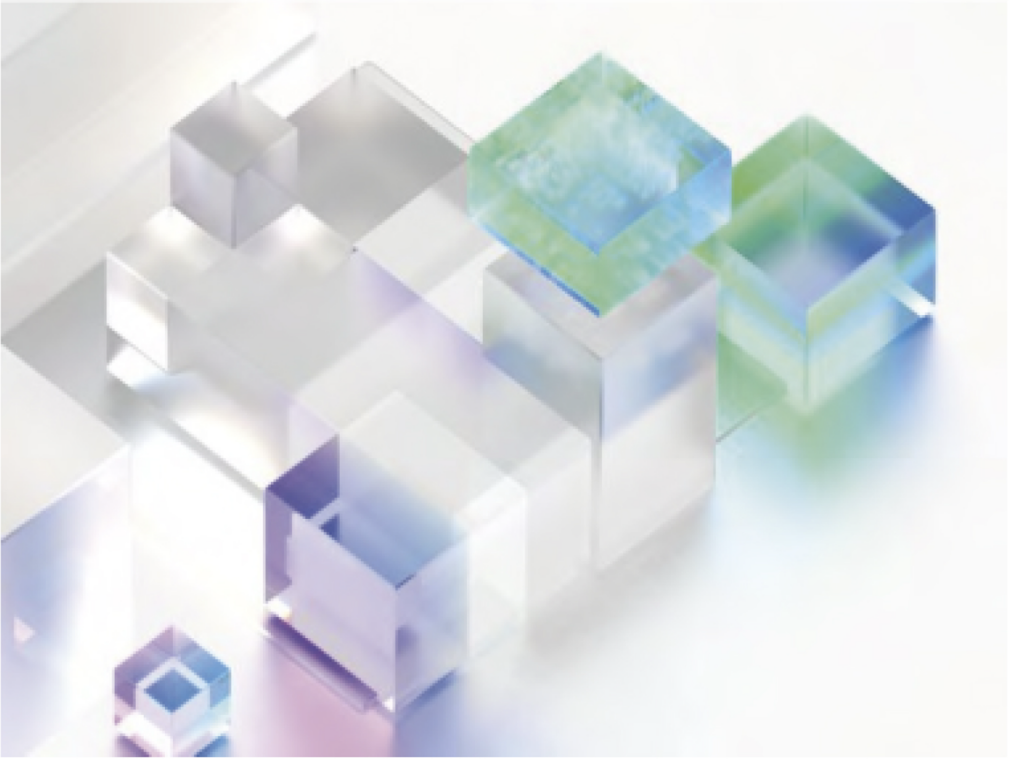Data is everywhere, but does it actually make companies smarter? The answer lies in how well businesses transform information into intelligence. Enter Return on Knowledge (ROK), a new way to measure success in conjunction with traditional models including ROI.
What Exactly Is Return on Knowledge?
Return on Knowledge measures the value created when information is transformed into actionable intelligence that impacts business outcomes. Unlike traditional ROI calculations, ROK considers both tangible and intangible benefits. But to truly understand this concept, we need to examine its foundations and mechanics.
The Knowledge Value Chain: From Raw Data to Business Impact
At its core, ROK views knowledge as flowing through a value chain with distinct stages:
- Data Collection: The gathering of raw, unprocessed information
- Information Organization: Structuring data into meaningful patterns
- Knowledge Creation: Contextualizing information with expertise and experience
- Wisdom Application: Deploying knowledge at the right moment to drive outcomes
- Value Realization: Measuring the impact of knowledge-driven decisions
ROK specifically measures how efficiently organizations move through this chain and the resulting value created at each transition point. The most significant returns typically occur at the later stages, where knowledge directly influences decision-making and action. But how exactly does this knowledge create value once it’s developed? This brings us to the dual mechanisms through which knowledge delivers returns.
The Dual Nature of Knowledge Value: Creation and Preservation
Knowledge assets generate returns through two distinct but complementary mechanisms that work together to form a comprehensive value proposition:
Direct Value Creation: Driving Positive Outcomes
Knowledge directly applied to solve problems, improve products, or enhance customer experiences creates immediate, visible impact. This mechanism includes:
- Accelerated innovation cycles: When R&D teams leverage existing knowledge rather than reinventing solutions, product development timelines contract dramatically. Each cycle builds upon previous learning, creating compounding returns rather than linear improvements.
- Reduced decision latency: Decision-making speed is a competitive differentiator in most industries. Organizations that can quickly access relevant knowledge reduce the time between identifying opportunities and capitalizing on them. This “decision velocity” becomes particularly valuable in fast-moving markets where timing determines success.
Indirect Value Preservation: Preventing Knowledge Erosion
Equally important but often overlooked, knowledge systems that prevent value leakage and maintain organizational capability provide critical protection against operational risks:
- Prevention of knowledge loss during employee transitions: When employees leave, they take valuable tacit knowledge with them. Effective knowledge management systems capture this expertise make it accessible to current and future team members. This institutional memory preservation represents a significant form of risk mitigation and enhanced value creation.
- Enhanced collaboration across organizational silos: Knowledge trapped in departmental silos creates inefficiencies and missed opportunities. Cross-functional knowledge sharing reduces duplicate work, enables parallel processing of tasks, and creates unexpected innovation through the combination of diverse perspectives.
- Improved customer experience through consistent service delivery: Knowledge accessibility ensures that every customer interaction benefits from the organization’s collective expertise, regardless of which employee provides the service. This consistency builds trust and reduces the variability that often undermines customer satisfaction.
While these dual mechanisms explain how knowledge creates value, they don’t fully capture why knowledge-based returns often outpace traditional asset returns. This unique characteristic is explained by knowledge’s multiplicative nature.
The Knowledge Multiplier Effect: Appreciation Through Use
Unlike physical assets that typically depreciate over time, knowledge assets have the unique property of appreciation through use. When knowledge is deployed:
- The original knowledge remains intact
- The application generates new insights and refinements
- The combination with other knowledge creates novel perspectives
- The distribution across the organization multiplies its impact
This multiplicative property explains why knowledge-intensive organizations often achieve exponential rather than linear performance improvements. Each knowledge interaction creates a “knowledge interest” that compounds over time. However, this multiplication doesn’t happen automatically—it depends heavily on the context in which knowledge is deployed.
The Contextual Nature of Knowledge Value: Right Knowledge, Right Time, Right Format
The value of any particular knowledge asset is not fixed but highly contextual. The same knowledge applied in different situations, by different people, or at different times may generate dramatically different returns. This contextual sensitivity means ROK must consider:
- Timeliness: Knowledge delivered too early may be ignored; too late, it loses value
- Relevance: Perfect alignment with current decision needs maximizes value
- Accessibility: Knowledge must be discoverable by those who need it
- Usability: Format and presentation significantly impact application
- Trustworthiness: Source credibility affects adoption and implementation
The highest ROK occurs when organizations optimize not just the knowledge itself but the context surrounding its deployment. This contextual understanding leads to a profound shift in how organizations should conceptualize knowledge.
Knowledge as Organizational Currency: Managing the Knowledge Economy
Perhaps most importantly, ROK reconceptualizes knowledge as a form of organizational currency that flows through business operations. Like financial capital, knowledge requires:
- Intentional investment strategies
- Efficient allocation mechanisms
- Protection against unintended losses
- Measurement of returns and performance
- Governance structures to ensure proper management
Organizations that view knowledge through this lens can more effectively budget for, deploy, and measure their knowledge assets as part of their overall business strategy.
From Concept to Practice: Measuring Knowledge Returns
With this conceptual framework established, the practical question becomes: how does ROK fit within existing business measurement systems? For organizations accustomed to traditional financial and operational metrics, integrating knowledge measurement requires careful calibration. To operationalize ROK effectively, leaders must understand how it complements, extends, and sometimes challenges conventional performance indicators
ROK vs. Traditional Business Metrics: A Comparative Analysis
ROI and ROK: Complementary, Not Competing
Return on Investment (ROI) remains a cornerstone financial metric, typically calculated as (Net Profit / Cost of Investment) × 100. However, ROI has significant limitations when applied to knowledge initiatives:
- Timeframe Differences: ROI typically measures short-term, direct financial returns, while ROK captures long-term, compounding value creation that may not be immediately visible on balance sheets.
- Value Capture Limitations: Traditional ROI calculations often miss the ripple effects of knowledge throughout an organization. When organizations implement AI-driven knowledge platforms, direct cost savings might show modest ROI, but broader ROK measurements—including accelerated innovation and reduced duplicative efforts—reveal substantially higher total returns.
- Measurement Methodologies: ROI relies primarily on quantitative financial data, while comprehensive ROK assessment incorporates both quantitative metrics and qualitative indicators like improved decision quality and enhanced collaboration.
Projects evaluated solely on traditional ROI metrics often receive less funding than those assessed through combined ROI/ROK frameworks, despite the latter generating significantly more long-term value. While ROI provides valuable financial visibility, it represents just one dimension of performance measurement. Expanding our view to include other standard metrics reveals additional opportunities for ROK integration.
ROK vs. Traditional KPIs: From Activity to Impact
While standard Key Performance Indicators (KPIs) like employee productivity, customer satisfaction, and operational efficiency remain important, ROK provides a unifying framework that connects these discrete measurements:
| Traditional KPI | ROK Enhancement |
|---|---|
| Training hours completed | Knowledge retention and application rates |
| Document repository size | Knowledge accessibility and utilization metrics |
| Customer service response time | Resolution quality through knowledge application |
| Employee satisfaction | Knowledge contribution and utilization correlation |
| Innovation pipeline metrics | Knowledge-driven ideation effectiveness |
Organizations that track numerous separate knowledge-related KPIs across departments often find that shifting to an integrated ROK framework reduces measurement overhead while providing deeper insights into how knowledge flows through the organization, resulting in improved cross-functional collaboration. With these comparative differences established, the question becomes: when should organizations prioritize ROK over these traditional metrics?
When to Prioritize ROK: Identifying Key Scenarios
While no single metric provides a complete picture of organizational performance, certain scenarios call for emphasizing ROK over traditional measurements:
During Digital Transformation Initiatives
When organizations undergo digital transformation, they initially track progress through traditional IT implementation metrics. After shifting to ROK-centered evaluation, many discover that technical deployment success has minimal correlation with actual business value. By prioritizing knowledge flow improvements over system functionality, they achieve greater value realization.
In Knowledge-Intensive Industries
Organizations in fields like professional services, healthcare, technology, and research gain disproportionate advantages from ROK-focused strategies. Knowledge-intensive industries typically derive more value from ROK improvements compared to asset-intensive sectors.
During Periods of High Employee Turnover
When facing significant workforce transitions, knowledge preservation becomes critical. Companies experiencing high annual turnover that prioritize ROK report lower productivity impacts compared to those focusing solely on traditional talent metrics.
In Rapidly Evolving Markets
Industries experiencing disruptive change benefit from ROK’s emphasis on adaptability. Financial institutions that prioritize knowledge metrics during periods of disruption often outperform competitors in new product adoption and customer retention.
For Complex, Collaborative Decision-Making
When decisions involve multiple stakeholders across organizational boundaries, ROK provides a more comprehensive framework for evaluating performance. Organizations following ROK-driven approaches frequently reduce complex project decision cycles while improving outcome quality.
Rather than viewing these scenarios as binary choices between traditional metrics and ROK, leading organizations are finding ways to integrate these measurement approaches.
The Integrated Measurement Approach: Combining Forces
Rather than choosing between traditional metrics and ROK, forward-thinking organizations are integrating them into unified measurement frameworks. These comprehensive dashboards track performance across multiple dimensions simultaneously:
- Traditional financial metrics (ROI, NPV, IRR)
- Operational KPIs (efficiency, quality, timeliness)
- Knowledge metrics (ROK, knowledge velocity, expertise amplification)
- Future capability indicators (organizational learning rate, adaptability index)
This integrated approach has proven particularly valuable for evaluating AI investments, which typically underperform when measured solely through traditional financial lenses but demonstrate exceptional returns when their knowledge implications are fully accounted for.
Moving Beyond Binary Metrics: Continuous Improvement
Perhaps most importantly, ROK represents a shift away from binary success/failure metrics toward continuous improvement frameworks. In the knowledge economy, organizations need metrics that don’t just indicate if they won or lost, but how effectively they’re learning and adapting.
By incorporating ROK into your measurement ecosystem, you gain visibility into not just what your organization is achieving, but how those achievements compound over time through enhanced knowledge capabilities. To realize this continuous improvement potential and capture the compounding nature of knowledge value, organizations need practical, actionable measurement approaches that can be implemented across business functions.
Operationalizing ROK: Metrics That Matter
After understanding how ROK differs from traditional metrics, the next challenge is implementing practical measurement systems. Quantifying ROK requires looking beyond conventional approaches to capture both the tangible and intangible dimensions of knowledge value. Forward-thinking organizations are focusing on four core domains of measurement that together provide a comprehensive view of knowledge effectiveness.
Knowledge Velocity: Accelerating Insight-to-Action Cycles
Knowledge velocity measures the time required for valuable information to move through your organization’s knowledge value chain—from initial capture to practical application. This critical metric evaluates how quickly information transforms into actionable insights that drive business outcomes. Organizations with high knowledge velocity can rapidly respond to market changes, customer needs, and internal challenges by mobilizing their collective intelligence efficiently. To measure knowledge velocity, track the average time between knowledge documentation and its first successful application, monitoring how this timeframe changes as knowledge management practices mature throughout the organization.
Knowledge Accessibility: Democratizing Organizational Intelligence
Accessibility metrics evaluate how easily team members can discover and apply relevant knowledge assets when needed, regardless of their position in the organizational hierarchy. This dimension examines what percentage of employees can access the right knowledge at the right time, and how intuitive that access process is for different user groups. Effective measurement combines system access metrics with user surveys to assess both technical availability and perceived ease of finding information. Organizations should map knowledge access patterns across departments to identify blind spots and ensure critical information reaches all who need it.
Knowledge Amplification: Scaling Expertise Beyond Boundaries
Amplification metrics measure your organization’s ability to extend specialized knowledge beyond individual experts to benefit the broader organization. This dimension evaluates how effectively you scale expertise from the few to the many, transforming individual knowledge into organizational capability. Successful measurement approaches calculate the ratio between knowledge creators and consumers while tracking how individual expertise expands its impact through technology enablement and process design. Organizations with strong amplification capabilities can operate at scale without sacrificing quality or consistency.
Knowledge Retention: Preserving Critical Organizational Memory
Retention metrics assess your capability to maintain institutional memory even as individual team members transition in and out of roles. This dimension measures how successfully your organization preserves critical knowledge despite employee turnover, ensuring continuity of operations and protecting intellectual capital. Effective measurement approaches track knowledge continuity during team transitions, assess whether key processes maintain effectiveness after personnel changes, and quantify retraining requirements following departures of key knowledge holders.
From Individual Metrics to Integrated Framework
While these four domains provide valuable insights into specific aspects of knowledge management, organizations need to integrate these measurements into a comprehensive framework that captures the full spectrum of knowledge value. The most successful knowledge-driven organizations employ three complementary methodologies that work together to provide a holistic view of ROK and connect knowledge metrics to business outcomes.
Knowledge Utilization Index (KUI): Measuring Application Impact
The Knowledge Utilization Index measures how often and effectively knowledge is applied across different functions, connecting knowledge assets directly to business outcomes. This methodology tracks both usage frequency (how often employees access and apply internal knowledge assets) and decision impact (evaluating whether knowledge-driven decisions lead to measurable improvements). Implementation requires deploying analytics to monitor internal knowledge platforms, conducting targeted surveys to assess perceived value, and measuring decision timeframes before and after structured knowledge integration. This approach creates clear linkages between knowledge availability and business performance.
Knowledge Transfer Efficiency (KTE): Optimizing Knowledge Flow
Knowledge Transfer Efficiency quantifies how effectively knowledge moves between teams and individuals, highlighting both strengths and bottlenecks in your knowledge ecosystem. This methodology focuses on onboarding acceleration (reduction in training time for new hires using structured knowledge assets) and knowledge redundancy reduction (measuring duplication in knowledge requests across departments). Organizations can implement this by comparing performance metrics with and without knowledge management systems, tracking repeat inquiries through internal ticketing systems, and monitoring cross-functional project timelines to assess knowledge transfer between departments.
Innovation Contribution Score: Connecting Knowledge to Creation
The Innovation Contribution Score assesses how effectively your knowledge assets drive innovation, linking past learning to future value creation. This methodology examines the development of new products, services, or processes informed by internal knowledge and the frequency of cross-functional collaboration where knowledge exchange leads to innovation. Implementation strategies include creating databases that link innovations to the knowledge assets that inspired them, conducting regular reviews of R&D projects to attribute knowledge sources to outcomes, and tracking innovation velocity before and after implementing structured knowledge management practices.
By combining these three methodologies with the four core measurement domains, organizations can develop a comprehensive ROK framework that captures both immediate impacts and long-term value creation from knowledge assets. This integrated approach ensures that knowledge management investments receive appropriate recognition for their full contribution to organizational success and provides leaders with actionable insights for continuous improvement.
The ROK Imperative: Why Measuring Knowledge Value Defines the Future
We stand at an inflection point where knowledge capabilities are rapidly becoming the primary determinant of organizational success. As artificial intelligence technologies advance at an unprecedented pace, the gap between knowledge-driven organizations and their competitors widens exponentially. This technological acceleration transforms knowledge from a helpful asset into an essential strategic imperative—one that must be systematically measured.
Organizations that quantify their Return on Knowledge gain unprecedented clarity into their most valuable invisible asset. By measuring ROK, leaders transform abstract notions of “institutional knowledge” into concrete, manageable resources with demonstrable business impacts. This measurement discipline fundamentally changes how decisions are made—investment priorities shift toward knowledge-enhancement initiatives that show measurable returns, knowledge barriers become visible and addressable, and the true value-creators within knowledge ecosystems receive proper recognition.
Without ROK measurement, knowledge remains in the realm of the intangible—valued in principle but neglected in practice. Organizations that fail to implement ROK metrics inevitably underinvest in knowledge systems, misallocate resources to lower-return activities, and remain blind to critical knowledge gaps until they manifest as business failures. In contrast, organizations with robust ROK frameworks can pinpoint exactly where knowledge investments yield the highest returns, creating a virtuous cycle where measurement drives improvement, which increases returns, which justifies further investment.
This measurement imperative creates an urgency that executives can no longer afford to ignore. In the past, knowledge management might have been viewed as a best practice or cultural nice-to-have. Today, the ability to quantify knowledge value represents the foundation upon which all other digital transformation efforts must build. AI systems, data analytics platforms, and digital tools deliver their full potential only when their contributions to the knowledge value chain can be measured, optimized, and scaled.
The competitive landscape of the coming decade will be defined not by which organizations have the most data or the most advanced technologies, but by which ones most effectively measure and maximize the return on their knowledge investments. Knowledge metrics provide the visibility needed to identify competitive advantages, anticipate knowledge-based risks, and capitalize on emerging opportunities before competitors can respond. The ability to systematically measure, improve, and deploy knowledge at scale has become the definitive competitive advantage—one that compounds over time as knowledge assets appreciate rather than depreciate with use.
For leaders navigating digital transformation, the ROK measurement imperative requires a strategic elevation of knowledge metrics to board-level conversations. Organizations must transition from viewing knowledge as an intangible, unmeasurable asset to recognizing it as a primary driver of financial performance—one that can and must be measured with the same rigor applied to other business metrics. When knowledge value becomes visible through systematic measurement, it naturally attracts the investment, management attention, and strategic priority it deserves.
The future belongs to organizations that master the knowledge measurement equation. Those implementing comprehensive ROK frameworks today know exactly where their knowledge investments are paying off and where they’re falling short. This measurement clarity creates self-reinforcing cycles of improvement that will position them to define industry standards for years to come. They aren’t just adapting to the knowledge economy—they’re actively shaping it through disciplined measurement, creating insurmountable advantages that will only strengthen as AI capabilities continue to advance.
In the emerging business landscape, the ability to measure and maximize your Return on Knowledge isn’t just a competitive advantage—it’s quickly becoming the price of admission to the future of business itself. Those who fail to measure what matters most will find themselves increasingly unable to compete against organizations that have made ROK a cornerstone of their strategic decision-making.
“The true scarce commodity of the future won’t be technology—it will be the knowledge of how to apply it.”- Microsoft CEO Satya Nadella,
Ready to Maximize Your Organization’s Return on Knowledge?
Transforming your knowledge assets into measurable business value requires expertise and a tailored approach. At Trackmind, we help organizations build integrated knowledge ecosystems that drive tangible results.
Take the next step:
- Schedule a free 30-minute ROK assessment call
- Get our knowledge management maturity checklist
- Join our monthly ROK measurement webinar
Contact our team to start your knowledge transformation journey.



